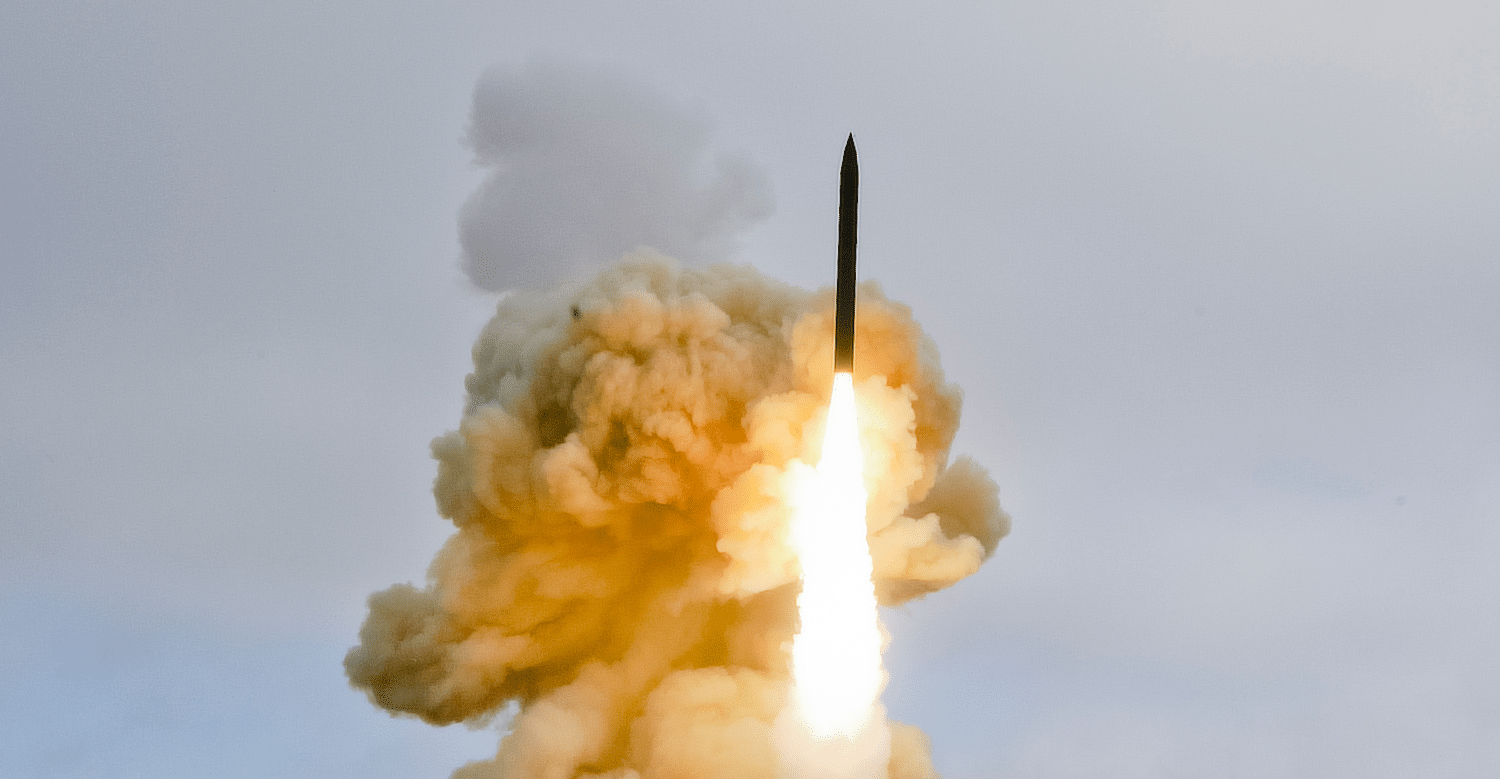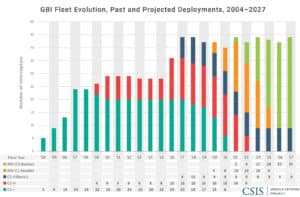Today’s missile defense test was a success. What does that mean?
This is a good day for homeland missile defense, and a bad day for Kim Jong-un. Hit-to-kill missile defense has once again been validated, this time against a complex and challenging ICBM-class threat. The Missile Defense Agency has been on a long road to improving the reliability and capability of the Ground-based Midcourse Defense (GMD) program. The United States has long expressed an unwillingness to accept strategic vulnerability to certain types of missile threats, like those from North Korea. Today’s test affirms the credibility of these efforts, and bodes well for the defense of the nation. Today’s intercept also means that hit-to-kill deniers will have a harder time contending that long-range missile defense doesn’t work.
What is the Ground-based Midcourse Defense system?
GMD is the only U.S. missile defense system currently devoted to defending the U.S. homeland from long-range ballistic missile attacks. First operationally fielded in 2004, GMD and its associated elements today span 15 time zones, including two Ground-based Interceptor (GBI) sites at Ft. Greely, Alaska and Vandenberg AFB, California, seven types of sensors, and various command and control systems. By the end of this year, a total of 44 GBIs will be deployed, 40 based at Ft. Greely, and another 4 at Vandenberg AFB.
When satellite sensors initially detect a missile launch from the heat signature of its plume, that information and data from other radars is fused and fed into a fire control system, which is then used to launch one or more GBIs. The GBIs fly into the path of an incoming missile before releasing an Exoatmospheric Kill Vehicle (EKV), which uses onboard sensors to itself detect and then hunt down the warhead, destroying it with the force of physical impact.
What happened during the May 30 test?
This is the first full-fledged intercept test of the system since the successful intercept in June 2014 (FTG-06b). Dubbed “FTG-15,” today’s event involved an ICBM-range target launched from the Kwajalein Atoll. Multiple sensor systems, including space-based infrared satellites and likely an Aegis SPY-1 radar, detected the missile and tracked its location. The Sea-based X-band Radar (SBX) also surveilled the missile, providing high resolution imagery which allowed the GMD system to discriminate the missile’s warhead from its accompanying debris.
Using this data, a GBI was launched from Vandenberg AFB. Once in space, the GBI released its Exoatmospheric Kill Vehicle (EKV), which identified the warhead with its onboard electro-optical and infrared sensors, diverted into the warhead’s path, and collided with it.
This test was the first full intercept test of the latest EKV configuration, called the Capability Enhancement-2 Block I (CE-2 Blk I). Among other improvements, the newer configuration features upgraded thrusters to better maneuver in space. An additional 8 of these newer kill vehicles are slated for deployment over the course of this year. Today’s intercept virtually guarantees that the deployments will go forward. This number could potentially grow beyond 44 to keep pace with the threat.
In a CSIS report released last month, Missile Defense 2020, we laid out a roadmap for what next steps might look like for the future of homeland missile defense, to include further increases in capacity, capability, and reliability.
What comes next for GMD?
In the immediate term, this intercept clears the way for the deployment of the full 44 interceptors, of which eight more are on track to be deployed by the end of 2017. Some of the technologies demonstrated on today’s interceptor will also likely be part of the Redesigned Kill Vehicle (RKV), expected to replace most of the current kill vehicles in the fleet over the course of the next decade.
Drawing upon extensive testing of both GBIs and Aegis/Standard Missile intercepts of the past decade, the RKV is expected to dramatically improve upon the reliability and manufacturability of the interceptors, as well as lower their cost and complexity. Should all continue to go well, GMD could come to be associated with the same degree of reliability and effectiveness now associated with other so-called regional defenses.
What makes GMD different from other missile defenses?
GMD is designed expressly to counter long-range, intercontinental class ballistic missiles which threaten the U.S. homeland. It uses a three-stage booster, giving the necessary range and divert capability to perform intercepts over a greater distance. This range in turn gives GMD the greatest coverage area of any U.S. system, defending all fifty states. Other missile defense systems, including Aegis, THAAD, and Patriot, are generally described as “regional” systems, and are tailored more toward short or intermediate range ballistic missile threats. While elements of these systems may have homeland defense applications, they have significantly much smaller coverage areas than GMD.
Conversely, GMD is not capable of shorter range, regional defense missions. North Korea’s short and medium range missiles threatening South Korea and Japan, for example, fall outside of GMD’s engagement envelope. These threats require other solutions, such as Aegis, THAAD, or Patriot. GMD is also not designed to intercept missiles within the atmosphere.
How has GMD performed in the past?
Before today, there were some 30 GBI flight tests, as well as one “no-test” due to the failure of the target (rather than the interceptor). Seventeen of these 30 have been intercept tests involving an attempt to hit a target, rather than mere flight tests. Of these 17, there have been nine successful intercepts for a success rate of 53%. Numerous factors have contributed to this record, including inconsistencies in kill vehicle manufacturing, and anomalies in test-only equipment. For example, a failed test in 2002 was due to incompatibility between a surrogate booster used only for testing and the kill vehicle, which resulted in a failure of the EKV to separate from the booster.
Are these tests realistic?
Although there is room for more challenging and realistic tests, the complexity and realism of GMD testing has increased considerably over the past two decades. They have consistently evolved in the number of integrated sensors involved in the tests, and in the complexity of the target missiles. There are, of course, limitations in the testing of any military system, including the size of its test range and the locations from which both targets and interceptors may be fired. Missile tests must also be arranged in well advance, and proper notification given to aviation and maritime authorities, so intercept tests must also occur during a designated window of time.
The most “realistic” test would be for North Korea to attack, but that is a degree of realism for which no one should wish.
This article was originally published at csis.org.


